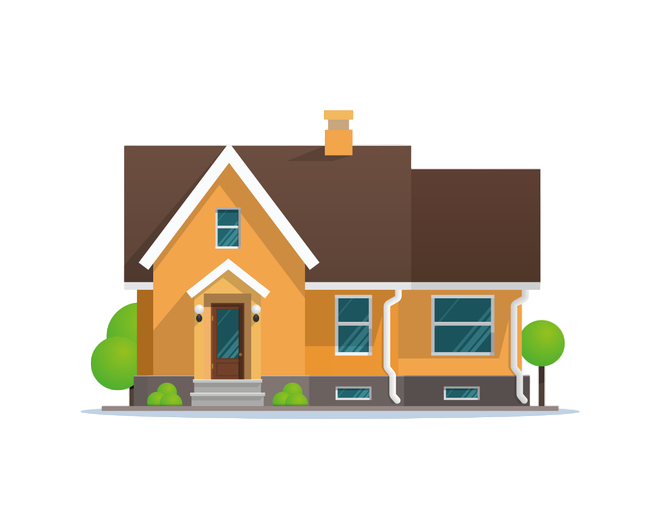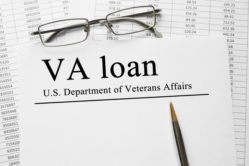Refinancing a VA loan can be a powerful financial move for veterans looking to make homeownership more manageable. Whether it’s lowering monthly payments through a reduced interest rate or switching from the unpredictability of an adjustable-rate loan to the stability of a fixed rate, refinancing could unlock significant savings.
But with every benefit comes potential drawbacks, so understanding the pros and cons of refinancing your VA loan is essential to making the right choice for your future.
Pros of Refinancing a VA Loan
Refinancing a VA loan offers numerous benefits, making it an appealing choice for many veterans. From locking in a lower interest rate to accessing cash from your home equity, refinancing can provide significant financial relief and added flexibility. Here are some of the main advantages:
1. Lower Interest Rate
Refinancing can give you a lower interest rate, which could mean substantial savings over the life of your loan. Many borrowers save between $200 and $300 per month on their mortgage payments with a reduced rate, freeing up funds for other priorities.
2. Lower Monthly Payment
A reduced interest rate often translates to a lower monthly payment, which can ease monthly financial obligations and make budgeting more manageable.
Extending your loan term can also lower your monthly payment. Though, this comes with the con of paying more lifetime interest, which we’ll cover in further detail below.
3. Access to Cash (VA Cash-Out Refinance)
For VA borrowers who want to tap into their home equity, the VA Cash-Out Refinance offers a flexible way to access funds.
- Use for Any Purpose: Unlike other loan types, there are no restrictions on how you spend the cash. You can use it for home improvements, debt consolidation, or even a vacation.
- Potential for Increased Financial Security: By tapping into equity, you can consolidate higher-interest debt or finance important projects without taking on new, costly loans.
4. Switching from an ARM to Fixed-Rate
Refinancing also allows VA loan borrowers with an Adjustable-Rate Mortgage (ARM) to switch to a fixed-rate loan. This change provides stability by locking in a consistent interest rate, protecting you from potential rate increases in the future. For many borrowers, moving to a fixed rate offers peace of mind, as it ensures predictable monthly payments over the life of the loan.
Cons of Refinancing a VA Loan
There are some cons involved with refinancing your home that homeowners are not always aware of. This isn’t to say that you shouldn’t refinance your VA loan, only that you need to be aware of certain realities. Let’s examine some of the potential cons of refinancing your VA loan.
Closing Costs
Closing costs are a significant and measurable expense in any refinance, just like they are with purchasing.
VA Refinance Funding Fee
Just like with your VA purchase loan, you’ll also need to pay the VA funding fee after refinancing, unless you are exempt. Luckily, the VA funding fee is less for VA Streamline refinances than it is for purchasing. The funding fee for cash-out refinances are generally the same as purchases.
Here’s the breakdown for both IRRRL and cash-out refinances compared to a purchase loan with no down payment:
| VA Refinance Type | Funding Fee for First VA Loan | Funding Fee for Second VA Loan |
| Purchase (No down payment) | 2.15% | 3.3% |
| IRRRL (Streamline) | 0.5% | 0.5% |
| Cash-Out Refinance | 2.15% | 3.3% |
VA Loan Refinance Options
VA IRRRL
The Interest Rate Reduction Refinance Loan, or IRRRL, is for those who want to refinance an existing VA loan into a new VA loan. A VA IRRRL is also commonly referred to as a Streamline refinance because the process is simplified so borrowers can close quickly.
To qualify for an IRRRL, the interest rate on your new loan generally must be lower than your original loan. An exception to this rule occurs if you are refinancing from an adjustable-rate mortgage (ARM) to a fixed-rate loan, where the new interest rate may be higher due to the stability a fixed rate provides.
IRRRLs wrap closing costs into your new loan, saving you the up-front expense.
VA Cash-Out Refinance
A VA cash-out refinance allows you to refinance any loan type, excluding VA IRRRL. It’s a great option for veterans and servicemembers who have not taken advantage of their VA benefit yet and don’t want to buy a new home to do so. A cash-out refinance also allows you to extract cash from the home’s equity to use toward a renovation, paying off debt, or another financial goal. However, you are not required to take out any cash when using a cash-out refinance.
Note: If you’re refinancing from a conventional loan to a VA loan, lenders will refer to it as a “cash-out refinance,” even if you don’t intend to pull equity out of the home. This is simply because you cannot use a VA streamline refinance with a conventional loan.
Remember that the property you wish to refinance with a VA loan must be your primary residence. Additionally, unlike the IRRRL, you cannot wrap closing costs into your loan with a cash-out refinance.

Check your VA Home Loan eligibility and get personalized rates. Answer a few questions and we'll connect you with a trusted VA lender to answer any questions you have about the VA loan program.
Questions to Consider Before Refinancing a VA Loan
While refinancing has many potential benefits, it’s not always a good idea depending on your eligibility. If you’re considering a refinance, here are a few things to consider:
Has Your Credit Score Improved?
Because your mortgage interest rate is determined partially based on your FICO credit score, if you know your credit score has improved considerably since your mortgage loan was signed, it makes sense to consider refinancing your mortgage. The improved credit score should offer a better interest rate. The good news is that being approved for a mortgage can improve your credit score over time, as long as you make regular payments.
If your credit score has decreased since closing on your VA loan, it may not be a good idea to refinance since you risk potentially less favorable terms.
Will You Be Moving Soon?
If you’re planning to move in the near future, refinancing may not be the best option. The upfront costs associated with refinancing—such as closing costs and funding fees—can take several years to recoup through monthly savings. This is often referred to as the “break-even point.” If you sell your home before reaching this point, you might end up paying more in refinance costs than you save. So, if a move is on the horizon, it might make more sense to hold off on refinancing until you’re more settled in a long-term home.
How Soon Can You Refinance?
The VA requires you to wait at least 210 days from your first loan payment on your original mortgage until you can close on your new VA refinance. This waiting period is known as “seasoning,” and it can vary by lender. Some lenders require 250 days between your first home loan payment and closing day for your VA refinance.
Are VA Mortgage Rates Increasing?
Click here to check VA Mortgage Rates in your area.
When VA mortgage rates rise, it’s essential to evaluate your options. When you have a fixed-rate mortgage, your interest rate remains the same throughout the loan term, unless you decide to refinance. If you have a fixed-rate mortgage and interest rates are increasing, then refinancing might not be the best option. Changing to a fixed-rate mortgage is advised if you currently have an adjustable-rate mortgage (ARM) and are anticipating rising interest rates. Refinancing into a lower interest rate with a VA Streamline refinance can be a great option when the current rate is lower than when you closed on your loan. Sometimes, people refinance even with a higher interest rate if they need to access home equity through a VA cash-out refinance or want to change the loan term, such as moving from a 30-year to a 15-year term to pay off the loan faster.
We recommend searching a variety of options before refinancing your mortgage. Some great places to shop for good mortgage rates include Quicken Loans and Lending Tree. We also have a mortgage comparison table on our site.
Do You Need to Consolidate Other Debts?
If you find your credit cards or loan payments have gotten out of control, you may decide to take some of the equity out of your home to pay off those debts. You can extract equity from your home with a VA cash-out refinance. Once you have used the home’s equity to pay off debts, you’ll just have one payment for your home each month to worry about. You’ll save money on interest payments, and it makes it easier to keep track of payments.
Are You Making More Money?
Not all mortgage refinances are done to obtain a lower payment. Sometimes, people get a higher-paying job or get married and then have a two-income earning family. Suppose you put your higher income toward paying off your mortgage sooner. You can choose to do this without refinancing. Or, you could refinance the mortgage to a 15-year term rather than a 30-year. You could save tens of thousands of dollars in interest and own your home free and clear that much sooner.
How much will closing be?
One of the most popular ways to determine if the closing costs paid justify the refinance is by dividing the amount of the closing costs by the monthly savings. This is sometimes referred to as the “time to recoup”.
For example, if you divide $3,000 in closing costs by a $200 per month reduction in your house payment, you will see that the refinance will pay for itself in just 15 months.
Most financial experts will say a VA refinance is worth doing if you can recover your closing costs in 24 to 36 months. This is especially true if you plan on being in the house for five years or longer. Not only will you recover the closing costs paid within the first two or three years, but you’ll reap real savings every year thereafter.
So, Should You Refinance Your VA Loan?
Refinancing a VA loan can be a smart move if it leads to more favorable terms, whether that’s lower monthly payments, a lower interest rate, or a shift from an adjustable-rate to a fixed-rate mortgage. For many veterans, refinancing offers an opportunity to make their home financing more manageable and potentially save thousands over the loan’s life. However, it’s essential to weigh the costs, such as closing fees and funding fees, against the potential savings.
Before making a decision, consider your goals—whether it’s reducing monthly expenses, accessing cash for other financial needs, or paying off your mortgage sooner. Refinancing isn’t one-size-fits-all, so be sure to explore your options and decide if refinancing aligns with your financial goals for the long term.




About the comments on this site:
These responses are not provided or commissioned by the bank advertiser. Responses have not been reviewed, approved or otherwise endorsed by the bank advertiser. It is not the bank advertiser’s responsibility to ensure all posts and/or questions are answered.